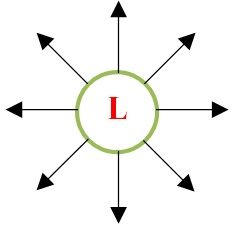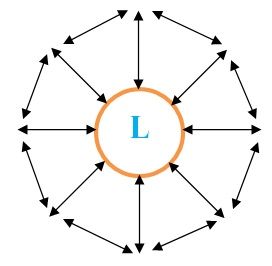 Leadership is a skill, which requires a person, to influence the subordinates to work voluntarily, and stimulating them to put their efforts, in achieving the goals of the organisation. Based on the objectives and the subordinates, the organisation can choose from different leadership styles. Autocratic leadership also called as monothetic leadership, is one of the styles, which encompasses centralization of the decision making power.
Leadership is a skill, which requires a person, to influence the subordinates to work voluntarily, and stimulating them to put their efforts, in achieving the goals of the organisation. Based on the objectives and the subordinates, the organisation can choose from different leadership styles. Autocratic leadership also called as monothetic leadership, is one of the styles, which encompasses centralization of the decision making power.
In autocratic leadership, the leader directs the subordinates regarding what is to be done and how is to be done. On the other extreme, the Democratic leadership is one that gives the subordinates equal chance of participating in the decision-making process as to what is to be done and how it is to be done.
Check out the article presented to you, which explains the difference between autocratic and democratic leadership.
Content: Autocratic Leadership Vs Democratic Leadership
Comparison Chart
| Basis for Comparison | Autocratic Leadership | Democratic Leadership |
|---|---|---|
| Meaning | Autocratic leadership is one wherein a line of demarcation exist between the leader and his followers and all the decisions are taken by leader solely. | Democratic leadership alludes to a type of leadership in which the leader shares decision making power and other responsibilities with the group members. |
| Authority | Centralized | Decentralized |
| Behavior orientation | Task Oriented | Relation Oriented |
| Conceived from | Theory X | Theory Y |
| Control | High level of control | Low level of control |
| Autonomy | Less | High |
| Suitability | Appropriate when the subordinates unskilled, uneducated and obedient. | Appropriate when team members are experienced, qualified and professional. |
Definition of Autocratic Leadership
Autocratic Leadership, or otherwise called as authoritarian leadership, is a leadership style adopted by the management, involving one man control over all managerial decisions of the organisation, without consulting with the subordinates. Under autocratic leadership, centralization of power exists, that lies in the hands of the leader, and so there is marginal input from the group members. Thus, all the decisions regarding the policies and procedures are taken by the leader himself/herself.
The autocratic leader dominates the entire group of subordinates, through coercion and command. The subordinates are supposed to follow the orders given by the leader unquestioningly.
It best suits the organisations where quick decision making is required. Further, when the subordinates are not much educated and experienced, autocratic leadership is appropriate.
Definition of Democratic Leadership
The leadership style which involves the considerable amount of participation of the employees in the decision-making process and organisation’s management is known as participative or democratic management. The suggestions and opinions of the subordinates are given importance. Indeed they are frequently consulted, on different matters.
Here, the leaders consider the opinion of the group and work accordingly. Moreover, the employees are informed about every matter which affects them.
There exist an open-end communication, through which the subordinates can communicate directly with the other members of the organisation, be it top level or bottom level. Democratic leadership encourages freedom of expression, independent thinking and participative decision making.
Key Differences Between Autocratic and Democratic Leadership
The difference between autocratic and democratic leadership can be drawn clearly on the following grounds:
- Autocratic leadership can be defined as a leadership style, wherein a clear line of demarcation between leader and follower exist, as the leader has got the absolute power of commanding and decision making. On the other hand, a leadership style in which the leader values the opinions and suggestions of the followers, but retains the final decision-making power in his/her hands is known as democratic leadership.
- There is centralization of powers in case of autocratic leadership, whereas the authority is delegated to the group members in democratic leadership.
- Autocratic leadership is task oriented that gives more emphasis on the completion of the task successfully. As against, the Democratic leadership is relation oriented, which aims at improving the superior-subordinate relationship, by sharing powers with the group members.
- The idea of autocratic leadership is derived from McGregor’s Theory X on motivation. On the contrary, democratic leadership is conceived from McGregor’s Theory Y on motivation.
- High level of control is present in autocratic leadership, whereas democratic leadership involves the low level of control.
- There is a freedom of expression and independence in thinking, in democratic leadership, which is not in the case of autocratic leadership.
- Autocratic leadership is best suited when the followers or group members are not so educated and skilled, but at the same time, they are obedient. As against, the Democratic leadership is appropriate when the group members are experienced, qualified and professional.
Conclusion
When it comes to effectiveness, democratic leadership is a step ahead than autocratic leadership.
One can make a choice between the two leadership styles, considering the immediate goal and subordinates. When the immediate goal of the concern is increase in output and subordinate’s need for independence is low, autocratic leadership style proves better. However, the immediate goal tends to be job satisfaction as well as the subordinates require the greater degree of independence, democratic leadership style is best.








Yui says
Nice information